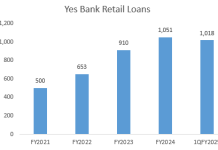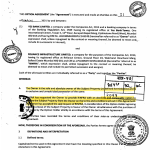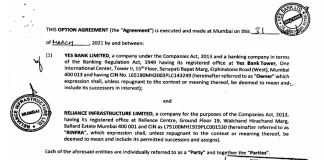Hemindra Hazari
The government’s decision to appoint Urjit Patel, the current deputy governor of the Reserve Bank of India (RBI), to replace Raghuram Rajan as governor of the central bank was met with a chorus of approval by the media, and by captains of industry and financial capital who proclaimed that the best individual had got the job. As with such announcements, even if someone else from the shortlist had been appointed governor, the chorus would probably have been no different.
Analysts in the media and in the capital market commented that any change in monetary policy from Rajan to Patel would be seamless as the anointed heir and the incumbent share similar views – a single-minded focus on inflation targeting with the Consumer Price Index (CPI) as the critical benchmark and a commitment to pushing the government to reduce the fiscal deficit further. But here’s the question to ask: if there is no change in policy, what was the need for the government to (in effect) sack Rajan? The obvious answer, and a lesson for Patel, is that this regime will not tolerate any political dissent by the RBI governor – no more references to a one-eyed king in the land of the blind, or pouring cold water on any of the prime minister’s pet schemes or any academic discussion on “tolerance”.
Low-key man
Patel keeps a relatively low profile, and has not given many public speeches as deputy governor, although prior to his appointment, he was a regular contributor to the Economic and Political Weekly and was a columnist at the Business Standard. By appointing him governor, the ruling BJP and its parent organisation, the Rashtriya Swayamsevak Sangh (RSS), are sending a loud and clear signal – despite the fact that labour intensive sectors such as agriculture, small and medium enterprises and exports are in acute distress, and the economy is desperately in need of expansionary measures, this government is willing to persist in fiscal contraction and to appoint a governor who would maintain high rates of interest, causing further hardships to the aam aadmi. Its intolerance is reserved for those who criticise, directly or indirectly, its political antics.
Apart from Rajan’s public pronouncements on matters not directly related to central banking, the other two areas of controversy during his tenure have been his stance on inflation and his efforts to compel banks to identify certain large corporate accounts as non-performing, resulting in large losses and a severe erosion of profits of government banks. With the low-key Patel in the seat, even with the existence of the Monetary Policy Committee, there would appear to be no significant change in monetary policy. At the same time, the government is unlikely to be embarrassed by any of his remarks.
Rajan’s pressure on banks
In the area of banking operations and supervision will Patel be any different from his predecessor? Rajan’s regulatory forays into banking have focused on increasing transparency by forcing banks to disclose poor quality large corporate loans as non-performing and introducing schemes such as the “5:25” scheme and strategic debt restructuring to fund poor quality accounts, in the hope of future recovery and identification of the sustainable debt level for errant borrowers.
Against a background of slack economic activity, Rajan’s pressure on the banks to come clean on their bad debt saw gross non-performing assets (GNPAs) in the banking industry shoot up 2.6 times, from Rs 228,000 crores in the December quarter of 2013 to around Rs 600,000 crores by March 2016. According to the RBI Financial Stability Report, June 2016, post the Asset Quality Review (AQR), the GNPAs of banks sharply increased between September 2015 and March 2016 from 5.1% to 7.6%. Meanwhile the ratio of overall stressed assets (including restructured standard loans) to gross loans rose marginally from 11.3% to 11.5% during the period. Government banks reported the highest level of stressed advances ratio at 14.5%.
On the issue of transparency, the Rajan-directed AQR raised two critical issues. The sharp rise in gross NPAs following the AQR casts grave doubts regarding the annual inspection of banks conducted by the RBI, which identifies poor quality loans to be classified as NPAs by the banks. If the AQR can result in a huge 250 basis points (100 basis point = one percentage point) increase in the gross NPA ratio, what does it say about the quality of the RBI’s annual confidential inspection of banks, which was regarded as the final authority on asset quality and which over ruled even the bank auditors? Secondly, even the AQR may not be the ultimate disclosure on poor asset quality. Axis Bank in the December 2015 quarter identified around Rs 2,800 crores as bad debt, as a result of the AQR. But by the March 2016 quarter, it disclosed a corporate watch list of poor quality loans of Rs 22,628 crores, which was eight times the AQR and 45% of its capital. How were the RBI’s annual inspection and the AQR unable to detect such large poor quality corporate loans in Axis Bank? Does the RBI have two different standards of banking inspection: a stringent one for government banks and a liberal one for new private sector banks, and if so to what purpose?
It could be argued that the large NPAs being reported by the government banks in the Rajan era and the grossly inadequate recapitalisation by the Indian government on grounds of fiscal discipline herald a deliberate plan to reduce the role of government banks so as to allow the private sector banks to grow and increase their market share. Arvind Subramaniam brazenly advocated such a strategy in an aptly titled op-ed, ‘Indian banking – reform by death’, which appeared in the Business Standard in 2014. In the article, the current chief economic advisor (CEA) to the Indian government argued that Rajan should stand firm and use the economic slowdown to implement the strategy.
“As growth declines and exposes the fragility of some of the public banks in the form of rising non-performing loans, the RBI should be brutal in its assessment of them, erring on the side of declaring some banks as unviable commercial institutions. The government will want to bail out the failing banks through fresh capital infusions. But here is where the RBI should stand firm, urging the government to let them go, on the grounds that a fragile economy can afford neither the fiscal costs of bailouts nor the efficiency costs of bad banks continuing to be prolonged on life support. The worse the economy, the more the bargaining chips Dr Rajan will have. And he should use them to resolve the bad public banks, in part by transferring their good parts to the private sector.”
Will the crusade continue?
The Indian media and the capital market hailed Rajan’s disclosure of poor asset quality in government banks as a model of transparency, and questions have been posed whether Patel as governor will continue Rajan’s crusade of cleaning up bank balance sheets. As per Subramaniam’s article, the agenda remains incomplete as Rajan did not get the second term he so desired and one wonders whether Patel, a fan of fiscal discipline, will compel government banks to report higher losses, while Subramaniam, seated on his perch as the CEA, will advise against the required capitalisation of banks. One also wonders whether the RSS is fully aware and endorses the implications of the “reform by death” strategy because till date, its vocal foot soldier in the Rajya Sabha, Subramanian Swamy, has not voiced any dissent regarding the CEA’s death wish for the government banks.
Another area of banking operations where Patel can transform the banking system is to remove the distinction between corporate loans and investments in corporate paper. The marginal cost-based lending rate (MCLR) has not removed the distinction between pricing a loan to a corporate and a similar tenure investment (commercial paper, bond) to the same corporate. Typically, highly rated corporates can issue an investment paper at a lower rate than for a similar tenure loan and at a rate that may be below the bank’s MCLR. Loan growth of banks also gets distorted as it does not capture the banks’ investments in corporate papers. By removing the distinction between loans and investments in corporate paper, the pricing and reporting of loans will become more transparent in the industry. Patel can also advocate the removal of the cash credit system (wherein banks instead of the borrowers are effectively managing the latter’s funds) with tenure based loans.
In the critical sphere of NPA recovery, Rajan’s much publicised schemes like 5:25 (which allows banks to extend long-term infrastructure loans of 20-25 years to match the cash flow of projects, while refinancing them every five or seven years) and strategic debt restructuring have not been successful. Patel may consider permitting banks to aggressively pursue one-time settlement with errant borrowers as in many cases banks have granted loans on fictitious assets and are harbouring losses which even an economic revival cannot recover. In such cases banks can at least recover a fraction of their loans upfront and such corporates (depending on the recovery percentage) should be barred by the RBI from henceforth taking bank loans for an extended period of time. Such measures will compel errant borrowers to make a reasonable settlement and banks can gain from an early settlement instead of waiting for a prolonged period for the possibility of loan recovery.
Patel, as deputy governor, worked in the larger-than-life shadow of Rajan, with a minimal public interface. Patel’s report on Monetary Policy Framework published in January 2014 clearly reveals that his monetary and fiscal views are similar to Rajan and hence tight monetary and fiscal policies may continue in the face of cost-push inflation. Such policies will continue to apply further demand pressures on an economy where the labour intensive sectors are struggling. If Patel’s views are also similar to Subramaniam on the future of government banks, the nights will be long and dark.














